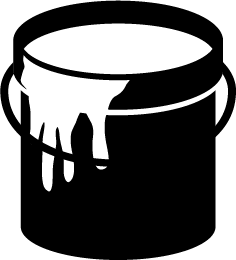Construction & Contractors Blog
Owning a home means staying on top of routine maintenance tasks, and scheduling regular chimney inspections is crucial for the safety and efficiency of your fireplace. During an inspection, professionals assess the condition of your chimney to identify any potential hazards or issues that could compromise its function. Understanding what might be uncovered can prepare you for necessary repairs and ensure your home remains safe and comfortable.
Structural Damage
One of the primary concerns during a chimney inspection is structural damage. Over time, bricks and mortar joints can deteriorate due to weather exposure, leading to cracks and gaps. These structural issues may compromise the chimney's stability and increase the risk of collapse. If your chimney inspector identifies such damage, it's important to address it promptly to prevent further degradation.
Creosote Buildup
Creosote is a highly flammable substance that accumulates inside chimneys as a byproduct of burning wood. During an inspection, professionals check for excessive creosote buildup, which poses a significant fire hazard. If your chimney has accumulated a lot of creosote, it could lead to a chimney fire. Regular cleaning and maintenance can mitigate this risk and ensure safe operation.
Blockages and Obstructions
Chimneys can become blocked by debris such as leaves, twigs, or even animal nests. These obstructions not only restrict airflow but can also lead to dangerous carbon monoxide buildup. A thorough inspection will identify any blockages and clear them out, ensuring that combustion gases exit your home safely and efficiently.
Chimney Liner Issues
The chimney liner plays a crucial role in protecting your home from heat transfer and gas leaks. Over time, liners can crack or deteriorate, compromising their effectiveness. An inspection will reveal any damage to the liner that needs addressing. Replacing or repairing the liner not only improves efficiency but also enhances safety by preventing heat from damaging nearby combustible materials.
Moisture Intrusion
Another issue that might be uncovered during a chimney inspection is moisture intrusion. Water can seep into your chimney through cracks, damaged flashing, or a missing chimney cap. Moisture weakens the structure and promotes mold growth, posing health risks. Early detection and repair of moisture problems can prevent costly repairs and maintain the integrity of your chimney.
Regular chimney inspections are essential for maintaining the safety and functionality of your fireplace. By identifying structural damage, creosote buildup, blockages, liner issues, and moisture intrusion, you can take proactive measures to address these concerns. Keeping your chimney in good condition not only enhances your home's safety but also provides peace of mind during those cozy winter nights by the fire. Schedule an inspection today to ensure your chimney remains a reliable and safe feature of your home.
For more info, contact a local company like Chimney Troops LLC.
Share19 November 2024

There's a common misconception that all construction workers and contractors do the same job. On one hand, this is kind of true. Construction workers and contractors all built things. However, most people in this field have a specialty. Some hang drywall. Others paint. Still others know how to pour foundations or install roofs. While some construction workers and contractors move from field to field throughout their careers, others spend their career honing one particular skill. Either approach is fine, from our perspective. What we really care about is the excellent work that these workers do, and that's what we plan to feature on this website.